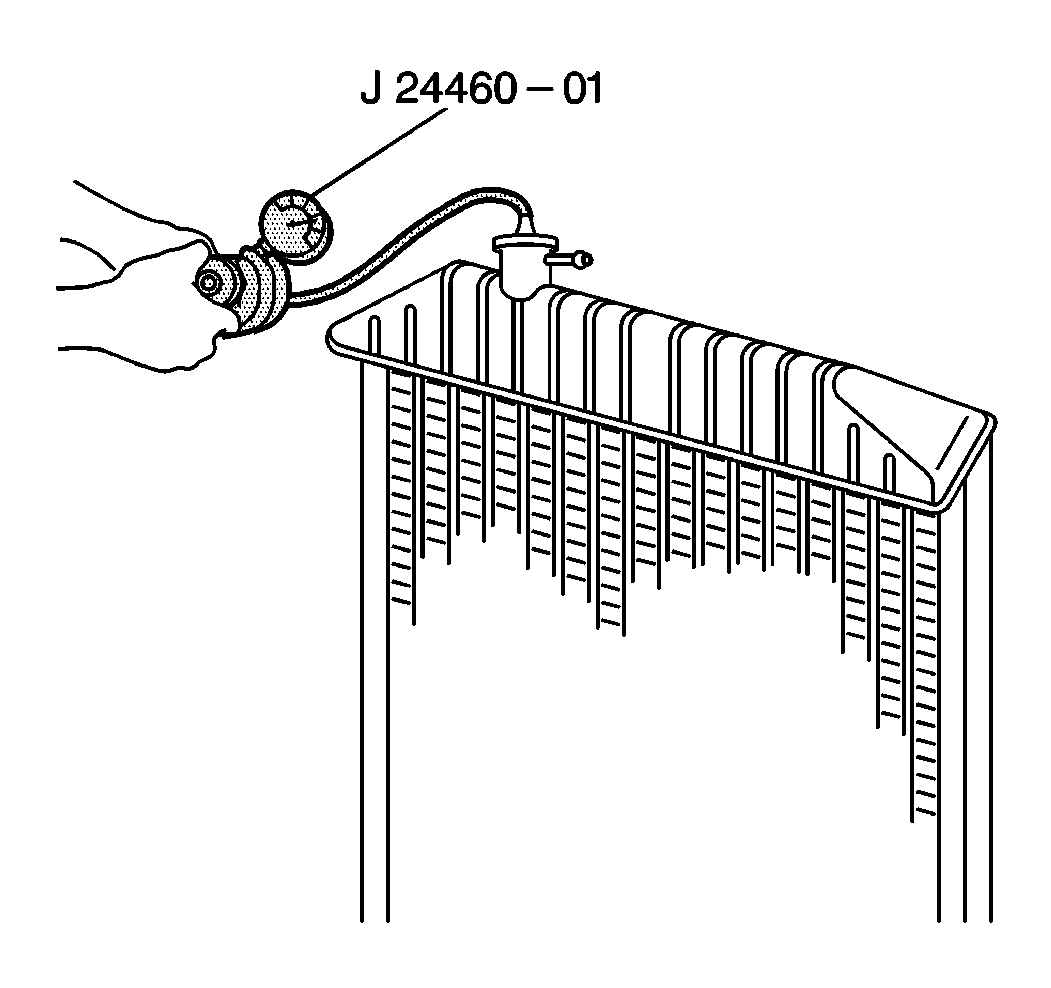Test the radiator cap for proper opening and closing pressures in order to ensure the safe, efficient operation of the cooling system. A pressure cap that can not maintain pressure lowers the boiling point of the engine coolant. The engine cooling system will then operate at a higher than normal temperature. Replace any faulty cap.
Radiator Cap
Caution: Under some conditions, Ethylene Glycol in engine coolant is flammable. To avoid being burned when adding engine coolant, do not spill it on the exhaust system or on hot engine parts.
Tools Required
J 24460-01 Cooling System Tester
- Remove the radiator cap.
- Wet the radiator cap gasket with coolant.
- Wash off any sediment from the sealing surface of the radiator cap gasket.
- Install the cap to J 24460-01 .
- Pump up the pressure to the pressure that is stamped on the cap by operating the plunger handle on J 24460-01 .
- Note the rate of decrease in pressure.
- The pressure reading should remain within the corresponding segment of the scale for approximately 10 seconds.

Replace the cap if the cap does not hold the pressure for 10 seconds.
Cooling System
Tools Required
J 24460-01 Cooling System Tester
- Tighten the radiator hose clamps.
- Tighten the heater hose clamps.
- Inspect the connections for leaks at the following locations:
- Remove the filler cap.
- Fill the cooling system to the level of the filler cap seat.
- Attach J 24460-01 to the filler neck.
- Follow the instructions that are supplied with J 24460-01 .
- Build up pressure to no more than 138 kPa (20 psi). The system should hold the pressure for approximately 2 minutes.
| • | The surge tank |
| • | The expansion tank |
| • | The air compressor coolant lines |

Off-Vehicle Testing
Notice: Do not use boil-out tanks or vats or other tanks that have been used for copper or brass radiators. The flux, acid, and caustic cleaners remaining in these tanks and will attack the aluminum and cause radiator failure. Use a separate test tank containing clean water for servicing aluminum/plastic radiators.
To protect the cooler and keep the fluid from running out of the system, use the following procedure:
- Install test fitting or rubber caps in the inlet and outlet necks
- Seal the oil cooler fittings with metal plugs
- Attach the pressure tester.
- Gradually apply air pressure until 138 kPa (20 psi) is attained. Do not exceed 138 kPa (20 psi).
- Check the pressure gauge in order to see if there is a pressure loss.
- Run water that contains a mild detergent over the radiator. Look for bubbles. Bubbles indicate leaks.
